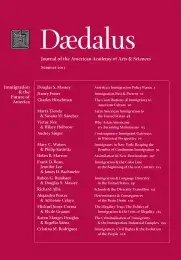Immigration Past & Present
Immigration has remade and changed American society since the nation's founding, and an understanding of the past can help illuminate the immigrant experience in the present. This essay focuses on three central questions: What is new about the most recent immigrant wave? What represents continuity or parallels with the past? And how have migrant inflows in earlier historical periods changed the social, economic, political, and cultural contexts that now greet – and shape the experiences of – the latest arrivals? In examining these questions, the focus is on the last great wave of immigration at the turn of the twentieth century, in which the newcomers were mainly from Eastern, Southern, and Central Europe, and the contemporary inflow, from the late 1960s to the present, which is made up overwhelmingly of people from Latin America, Asia, and the Caribbean.
To know the past, it is often said, is to better understand the present. Nowhere is this more true than when it comes to immigration. Since the founding of the United States, immigration has been a fundamental feature of the nation’s population, institutions, and identity. Today, as in earlier eras, immigration is transforming the country in profound ways and also changing the lives of the newcomers who have moved here. What is new about the most recent immigrant wave? What represents continuity or parallels with the past? And how have migrant inflows in earlier historical periods changed the social, economic, political, and cultural contexts that now greet–and shape the experiences of–the latest arrivals?
In examining these questions, I focus on the two massive immigrations in the period that stretches from the end of the nineteenth century to the beginning of the twenty-first. The last great wave at the turn of the twentieth century, from about 1880 to the early 1920s, brought more than 23 million immigrants to America’s shores, mainly from Eastern, Southern, and Central Europe; the contemporary inflow, from the late 1960s to the present, is made up overwhelmingly of people from Latin America . . .
